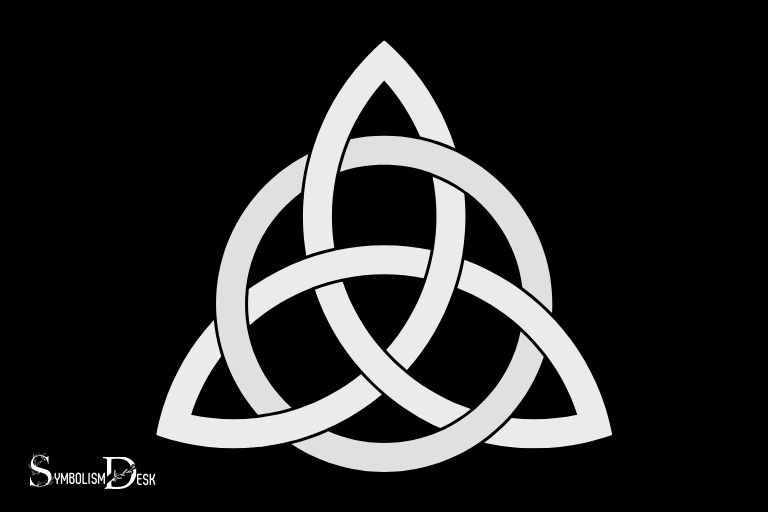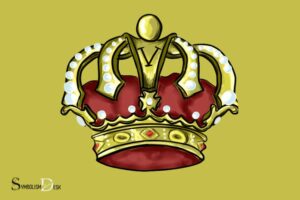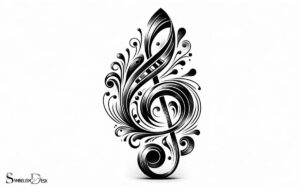Scottish Symbols And Meanings Chart: Identity, Heritage
Scottish symbols and their meanings chart represents various symbols that hold significant importance in Scottish culture and history. These symbols often carry deep meanings and are used to represent the Scottish identity, heritage, and pride.
Scotland has a rich history filled with legends, myths, and stories that have been passed down through generations. Many of these tales involve symbolic elements that are unique to Scottish culture and traditions.
A chart of Scottish symbols and their meanings is a useful tool to understand and appreciate the depth and significance of these symbols in Scottish history.
Scotland’s rich history and culture are woven together with a diverse array of symbols and their meanings.
From the resilient thistle representing strength to the spiritual significance of the Celtic Cross, these symbols paint a vibrant picture of Scotland’s heritage.
The Saltire and the Scottish Lion Rampant are proud displays of national identity, with the former representing the patron saint of Scotland and the latter symbolizing the strong and noble Scottish spirit.
These symbols help preserve and celebrate the uniqueness of Scottish culture, ensuring it continues to captivate and inspire future generations.
Chart of Scottish Symbols and Their Meanings
| Scottish Symbol | Meaning |
|---|---|
| Saltire (Saint Andrew’s Cross) | The national flag of Scotland, symbolizing the martyrdom of Saint Andrew and Scotland’s identity as a nation. |
| Lion Rampant | The royal symbol of Scotland, representing bravery, strength, and dignity. |
| Thistle | The national flower of Scotland, symbolizing bravery, resilience, and protection. |
| Celtic Cross | A distinctive Christian cross with a circle around the center, representing the blending of pagan and Christian beliefs in Scotland. |
| Scottish Heather | A plant native to Scotland, symbolizing good fortune, admiration, and protection. |
| Luckenbooth Brooch | A traditional Scottish love token, often given as a wedding or engagement gift, symbolizing love, loyalty, and commitment. |
| Tartan | A pattern of criss-crossed lines, symbolizing Scottish heritage and identity, with specific patterns (clan tartans) representing various Scottish clans. |
| Bagpipes | A traditional Scottish musical instrument, representing the history and culture of Scotland. |
| Kilt | A traditional Scottish garment, symbolizing pride in Scottish heritage and identity. |
| Clan Crest Badge | A heraldic symbol representing a specific Scottish clan, symbolizing loyalty and allegiance to the clan and its chieftain. |
Key Takeaway

Four Facts About Scottish Symbols
Understanding The History And Origins Of Scottish Symbols
Scottish symbols and their meanings have been an essential element of the country’s culture for centuries.
They are intertwined with the history and identity of the scottish people, and each symbol has a unique story behind it.
In this blog post, we will explore the history and origins of several scottish symbols and their meanings.
From ancient pictish symbols to modern clan crests, we will delve into the fascinating world of scottish symbolism.
An Overview Of Pictish Symbols And Their Meaning
The picts were an ancient people who inhabited what is now modern-day scotland between the 3rd and 8th centuries ad.
They are known for their intricate artistic style, particularly in their use of symbols. Many of these symbols were carved into standing stones, and their meanings remain somewhat of a mystery to this day.
Here are some key points:
Exploring Symbols Used By Ancient Celtic Tribes
The celts were another ancient group of people who lived in scotland from around 500 bc to 400 ad. They too had a rich tradition of using symbols in their artwork, particularly in their intricate knotwork designs.
Here are some key points:
Understanding The Use Of Symbols In Scottish Clans And Tartans
Finally, we come to the use of symbols in scottish clans and tartans, which is perhaps the most well-known aspect of scottish symbolism. Here are some key points:
Scottish symbols have a rich and varied history, and they continue to play an important role in scottish culture today. From the picts to the celts to the scottish clans, each symbol has a unique story to tell, and they all contribute to the rich tapestry of scottish heritage.
The Most Popular Scottish Symbols And Their Meanings
Scotland is a land rich in history and culture, from robert burns to the loch ness monster. One of the most fascinating elements of scottish culture is the range of symbols that represent it. We will explore the most popular scottish symbols and their meanings.
The Scottish Thistle: National Emblem And Defender Of The Land
- The scottish thistle is the oldest recorded national flower.
- It became a symbol of scotland in the 13th century, when the norse invaders attempted to invade a scottish army encampment at night.
- The norsemen inadvertently stepped on the thistles, and their yells of pain alerted the scots, who were able to defend themselves and avoid defeat.
- The thistle has since become a symbol of scotland’s fierce, enduring spirit in the face of adversity.
Saltire: St Andrew’S Cross And Its Significance In Scottish Culture
- Saint andrew, one of the twelve apostles of jesus, was scotland’s patron saint.
- The saltire, or st andrew’s cross, has been used as scotland’s banner as early as the 14th century.
- The flag’s blue background represents the clear sky above scotland and the white diagonal cross symbolizes the white clouds in the sky.
- The saltire is now recognized as one of the most iconic flags in the world, with its design featuring prominently in scottish art, fashion, and architecture.
The Celtic Knot: Endless Knots And Their Powerful Symbolic Interpretations
The Rampant Lion: The Symbol Of Power And Authority
- The rampant lion is one of scotland’s most iconic symbols of power and authority.
- It is a stylized depiction of a lion in a standing position, with one paw raised and its tongue extended.
- The lion is used to represent strength, courage, bravery, and leadership.
- The rampant lion has been used as a symbol of scottish heraldry for centuries, appearing on everything from flags to coins to coats of arms.
The Edinburgh Castle: The Mighty Fortress And Its Symbolic Significance
The symbols of scotland are as diverse as the country’s rich culture and history. Each symbol has its own unique significance and meaning, and they all contribute to the formation of scottish identity.
From the scottish thistle to the edinburgh castle, these symbols are a testament to the strength and resilience of the scottish people.
Understanding The Use Of Scottish Symbols In Art, Literature, And Design
Scottish symbols and meanings chart is a helpful guide for those who seek to understand the significance of scottish symbols used in art, literature, and design. We will focus on understanding the use of scottish symbols in these areas.
Scottish Symbols In Literature: Examining Their Use In Novels And Poems
- Scottish symbols are often highlighted in scottish literature.
- Robert burns was a scottish poet who frequently used scottish symbols in his works.
- The scottish thistle, tartan, and bagpipes are commonly referenced in scottish literature.
- Scottish symbols are used to represent emotions and sentiments in scottish literature.
- Novels like ‘outlander’ and poems like ‘the flowers of the forest’ are good examples of the use of scottish symbols in literature.
The Use Of Scottish Symbols In Art And Design: An Insight Into Scottish Art History
- Scottish art history shows a wide range of scottish symbols used in art and design across different periods.
- Scottish symbols such as the celtic cross, scottish thistle, and saint andrew’s saltire are commonly used in scottish art.
- The use of scottish symbols can be seen in scottish architectural designs, paintings, embroideries done on tartan cloths, and jewelry crafted with precious stones.
- Scottish symbols in art are often used to represent the patriotism of scotland or to symbolize a particular clan or family.
- Examples of scottish artists who use scottish symbols in their works include john byrne, andrew cheyne, and judy rutherford.
Understanding The Role Of Scottish Symbols In Ceremonies, Festivals, And Celebrations
- Scottish symbols are an integral part of scottish culture and are observed during various celebrations and ceremonies.
- The scottish thistle is a common symbol seen during scottish weddings and signifies the unity of the couple.
- The highland games festival is a popular scottish event that includes different events like tossing the caber, hammer throwing, and tug-of-war.
- Bagpipes, kilts, and tartan are some of the scottish symbols on display during the highland games.
- The edinburgh military tattoo is another celebration that displays scottish symbols like the saltire and scottish thistle during military ceremonies.
Scottish symbols have played an important role in scottish heritage and continue to be relevant to this day. Understanding the significance of these symbols in art, literature, and design provides a deeper appreciation of scottish culture. For example, the thistle is a well-known symbol of Scotland, representing resilience and strength. The saltire, or St. Andrew’s Cross, is the flag of Scotland and holds deep historical and religious meaning. These symbols have been incorporated into various aspects of Scottish culture, from traditional clothing to modern design. Understanding the significance of these symbols also provides insight into other cultures, such as Canada’s national emblem explanation. The use of symbols in this way allows for cross-cultural understanding and appreciation.
The Importance Of Scottish Symbols In The Modern World
Scottish symbols are rich in history and deeply rooted in scottish culture, offering a glimpse into the country’s past.
In contemporary times, scottish symbols continue to captivate the world, with their unique meanings and designs being imitated in fashion, music, and movies.
Another vital aspect of these symbols is their role in promoting scotland’s tourism industry, and their impact is not limited to the country’s borders. Let’s explore how scottish symbols continue to be relevant in the modern world.
Scottish Symbols In Contemporary Culture: Their Use In Fashion, Music And Movies
Scottish symbols have made their way into contemporary culture through fashion, music, and movies. They have become recognizable designs worldwide, with many people using scottish symbols in their daily lives.
Some of the ways scottish symbols are used include:
- Scottish tartan patterns are a popular design in the fashion industry, with many fashion designers incorporating these patterns into their designs.
- Bagpipes, one of scotland’s most famous symbols, have been used in different music genres, including rock, pop, and folk music.
- Scottish symbols have also been used in movies and television, with productions such as outlander and braveheart showcasing the country’s cultural heritage.
The Role Of Scottish Symbols In Tourism: Promoting Scotland Through Its Cultural Heritage
Scotland’s tourism industry highly depends on its cultural heritage, and scottish symbols are an essential part of this heritage. Scottish symbols represent the country’s rich history, and tourists who visit scotland are fascinated by them.
Some of the ways in which scottish symbols are used in tourism include:
- Scottish castles, which hold a significant place in scottish culture, history, and art, draw visitors to scotland.
- The scottish thistle, the country’s national emblem, is used to represent the country worldwide and is a popular symbol for scottish tourism.
- Tartan patterns, kilts, and sporrans, which are an essential part of scottish clothing, are a significant attraction for people visiting scotland.
Scottish Symbols And The Global Community: Recognizing Their Impact Beyond Borders
Scotland’s symbols extend beyond its borders, making them an essential part of the global community. Scottish symbols are recognized internationally and are often used to represent scottish culture worldwide.
For instance:
- Scottish bagpipes, kilts, and tartan patterns have become an international symbol of scotland, used worldwide to represent the country’s culture.
- The scottish thistle is recognized globally and is used as a symbol of scotland worldwide.
- Tartan patterns, kilts, and sporrans have become an essential part of the global fashion industry, with many people worldwide wearing these scottish designs.
Scottish symbols continue to captivate the world, with their unique meanings and designs being imitated in fashion, music, and movies.
Additionally, scottish symbols have a significant role in promoting scotland’s tourism industry, and their impact is not limited to the country’s borders.
Scottish symbols extend beyond scotland, making them an essential part of the global community.
What Are Some Unique Symbols of Nevada and Their Meanings?
Nevada symbols and their meanings are a reflection of the state’s vibrant culture and history. The sagebrush, designated as the official state flower, represents endurance and resilience in Nevada’s arid landscapes. The desert bighorn sheep, the state animal, embodies strength and adaptability. The famous Nevada state quarter showcases a desert scene, embodying the state’s diverse and awe-inspiring natural beauty. These symbols collectively paint a vivid picture of Nevada’s unique identity.
FAQFor Scottish Symbols And Meanings Chart
What Are The Primary Scottish Symbols?
The primary scottish symbols include the thistle, lion rampant, saltire, and tartan.
What Does The Thistle Symbolize In Scottish Culture?
The thistle is a symbol of scotland’s resilience, independence, and defiance against its enemies.
What Is The Meaning Of The Scottish Lion Rampant?
The scottish lion rampant is a symbol of bravery, valor, and strength, reflecting scotland’s fierce spirit.
What Is The Tartan Pattern, And Why Is It Significant?
The tartan is a woven fabric of different colored threads, and it is significant because it represents a family’s or clan’s unique identity.
What Does The Saltire Flag Symbolize?
The saltire, or st. andrew’s cross, is a symbol of scotland’s christianity, specifically honoring st. andrew, the country’s patron saint.
Conclusion
Scottish culture is full of symbols that represent the country’s history, heritage, and traditions. Understanding the symbols and their meanings can help us to connect with scotland’s past and its people.
We hope that our scottish symbols and meanings chart has provided you with valuable insights into scotland’s rich symbolic language.
From the thistle to the unicorn, each symbol holds a special significance and tells a unique story. We encourage you to explore scotland and its symbols further and to learn about its vibrant culture, traditions, and history.
By doing so, you will gain a deeper appreciation for this beautiful country and its people.
So next time you come across a scottish symbol, remember to take a moment to reflect on its meaning and significance.






